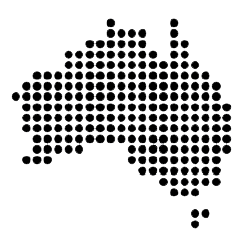Lending Terminology
Lending Terms Explained
Struggling with ‘finance jargon’ see our list of commonly used lending terms and their explanations.
A bank guarantee is issued by banking institution ensuring that the liabilities of a debtor will be met. In other words, if the debtor fails to settle a debt, the bank will cover it. A bank guarantee enables the customer (debtor) to acquire goods, secure a property, secure a lease, buy equipment, or draw down loans.
A business loan is a loan for which its purpose is for business use. Business loans are generally used to fiancé business expansion or consolidate business debts. Business loans can be secured against real property or unsecured against the business itself.
Lenders now offer basic variable loans with lower interest rates, but with fewer features than a standard variable loan. The interest rates and repayments vary over the term of the loan. These loans generally have a lower interest rate, Repayments are also lower, and however they may not offer the features or flexibility of other loans (not portable)
Bridging loans or bridging finance is usually a short term loan that covers the financial gap between the purchase of a new property and the sale of the old property.
Break costs are an amount equal to the lenders estimate of a loss arising as a result of you breaking your loan when it is at a fixed rate. Break costs may be substantial and can be incurred when you prepay (make additional payments to) your loan in when in a fixed rate period or the total amount owing becomes immediately payable because you are in default; or you switch your current fixed rate loan to another loan product or lender.
A bank bill is a short-term money market investment. The investor purchases a bank bill at a discount to its face value. The face value is the amount the investor will receive at the maturity date. The amount of discount (the difference between face value and purchase price) represents the return to be earned by holding the bank bill to maturity. Bank bills are short-term investments. Generally the available terms range from 30 days to 180 days. The interest rate available for longer terms is typically higher than for shorter terms, but this is not always the case.
Basic Variable Rate loans offer a lower interest rate, but fewer features. In certain cases you usually have the option to pay for additional flexibility and features when you need them.
Stands for Business Activity Statement. This is a form that businesses are required to submit to the Australian Taxation Office to report their taxation obligations.
Previously referred to as CRAA which is an acronym for The Credit Reference Association of Australia (CRAA), the body which holds credit details on Australians, more commonly referred to as your credit file. When applying for any type of credit, credit providers i.e. lending institutions make an inquiry on the applicants credit file to view the credit history of the borrower. Almost all borrowers who have any credit history will have their credit file listed with Equifax (formerly VEDA) or Dun & Bradstreet
A construction loan is a loan used to build or develop property. Construction loans work on the basis of progressive draw downs.On a standard domestic building project the loan will generally be drawn in stages as follows in accordance with the fixed price building contact;
- Deposit
- Base Stage
- Frame Stage
- Lockup Stage
- Fixing Stage
- Completion
Once the dwelling(s) are complete the residential construction loan converts into a standard home or investment loan.
- Copy of certificate of registration of the builder
Commercial finance is a broad term used to describe the provision of finance (credit) for commercial purposes which include but are not limited to business purposes & investment purposes. Commercial finance from a lending point of view is generally used to describe the nature of the proposition and also the security involved in the transaction for example commercial, retail or industrial property finance.
A deposit bond is a written guarantee that substitutes the 10% cash deposit traditionally required to purchase a property. Applicants can apply for a deposit bond and if you are approved you will be required to pay a premium (fee) for the bond. The deposit bond premium is a one off fee that replaces your 10% deposit and secures the property until settlement.
Equity release means utilising a loan (mortgage) to drawn or borrow against the capital value of the security property. For example if you had a property worth $700,000 and an existing mortgage of $300,000 and you wished to apply for a loan of $500,000, then you would be obtaining $200,000 ‘equity release’ secured against the property. Equity release is also known as ‘Cash out’ where funds are provided to the borrower without the control of the lender.
Fixed Rate loans protect you against interest rate changes for an agreed time, so you have peace of mind knowing your repayments won’t increase. Fixed rate loans lack the flexibility of variable rate loans suck as ability to make additional repayments as you like. This is a trade off for the certainty in locking in rate. If variable rates go down during the fixed rate term you wont benefit, break costs may apply if you wish to revert to a variable rate before the end of your fixed rate term.
Home Equity Loans allow you to unlock the equity in your existing property for other opportunities such as renovating your home, investing in shares or financing an investment property.
An Interest capitalisation option generally applies to Line of Credit loans which do not require regular repayments provided that the loan facility has sufficient credit or equity in the loan. For example you may have a line of credit with a limit of $400,000, but may have only drawn down $300,000 therefore you have $100,000 in credit or equity available for redraw. With a line of credit loan in this case if you choose not to pay the interest on your amount drawn down ($300,000), your unpaid interest is added to your loan balance, increasing the total amount that you owe, this is known as Interest Capitalisation
In nearly all cases, if you borrow more than 80 percent of what the lender considers to be the value of the property they will ask you to pay their mortgage insurance. Some lenders require the borrower to pay the lender’s mortgage insurance at loan to valuation ratios less than 80 per cent. Lender’s mortgage insurance is usually charged as a one-off premium and is calculated on a sliding scale. That is, the greater the percentage of the property value you borrow and the more money you borrow, the higher the mortgage insurance premium payable. Lender’s mortgage insurance protects the lender in the event that you default on your loan and the outstanding value of your loan is greater than what they receive from selling the property.
Line of Credit loans are interest only variable rate loans that have full flexibility attached to them such as cheque books and credit cards. These are ideal for wealth most line of credit loans offer interest capitalisation features, provided that the borrower has sufficient equity in the loan account no minimum repayment is required. Line of credit rates are generally higher than standard variable rate term loans.
Loan to value ratio or LVR is calculated as percentage (%) of the amount of debt divided by the value of the security property. For Example a $500,000 loan secured via a property worth $750,000 would have a loan to value ratio (LVR) of 66%.
Low Doc (document) loans are loan which do not require any formal financial documentation from the borrower. Low doc simply means (low level or less documents) that required for that of a traditional loan (full doc loan) where full financial documents are required to substantiate a borrowers income. Lo Doc loans are used by self employed business people with lack of financial statements or complex entity structures making proof of income difficult. Tax returns or financial statements are not required. Lenders usually base their qualification for such loans on an income declaration but no proof of income is required. Terms and credit requirements for low docs vary from lender to lender including mortgage insurance premiums.
Non conforming loans have been designed especially to help borrowers who do not meet normal lending criteria. They are also known as specialist loans or bad credit loans or credit impaired loans. Borrowers that fit into this category include those who have an impaired credit history, such as judgements or defaults. They also categorise an array of lending products that accommodate circumstances or borrowers requirements that traditional lender or mortgage insurers won’t consider.
The National Consumer Credit Protection Act is legislation designed to protect consumers & ensure ethical practices in the mortgage & finance industry.
This is the gross realisable value (GRV) of a completed development project exclusive of any GST liability.
An offset account is a banking account linked to a loan account that has the ability to reduce the interest charged on the loan account by offsetting a credit balance against the mortgage debt, with interest charged based on the outstanding net debt.
Loan Portability is used to define where a loan can be ‘moved’ from one security property to another. This feature allows borrowers to substitute their security property, when buying or selling without the need to payout or refinance the loan
A reverse mortgage is a loan facility that allows you to use the equity in your home to enjoy life in retirement. This is a special loan where you can choose to make no repayments until your home is sold, which only occurs when you leave your home or at death. The home is then sold and the proceeds of the sale used to repay the loan. Any amount left over will go to you or your beneficiaries.
Redraw is the ability to access or ‘draw down’ funds that are available in a loan account that have not yet been utilised or that have been repaid and are now available to be ‘redrawn’.
Paying off an existing loan with the proceeds from a new loan, usually of the same size, and using the same property as collateral. Reasons to refinance include reducing the term of the loan, debt consolidation, increasing your loan size or switching to lending institutions to benefit from a lower rate of interest.
Rate Lock is a commitment by a lender guaranteeing a specified interest rate for a specified period of time also called lock-in.
Stamp Duty may be described as revenue that is imposed on various types of instruments such as transfers and agreements for the sale of real estate, to calculate stamp duty payable see our stamp duty calculator.
A split loan is a loan that you can divide up or ‘split’ into separate components. Split Rate or split portion loans combine the flexibility of fixed and or variable rates as well as having separate ‘splits’ for easy tax deductibility.
Standard Variable Rate loans offer you maximum flexibility and great features, including the option to fix or split your loan, the ability to make additional repayments when you want, and the option to redraw these funds for any purpose when you require it.
How We Help Others






